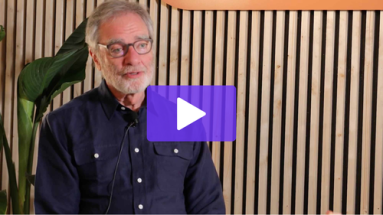Every marketer these days, regardless of brand or industry, wants to deliver the right ad at the right time to the right consumer on the right device for the best results. However, just as a single note is not enough to make a song, seeing just one ad is not likely to prompt a consumer to buy a car, switch brands, walk into a store or book a vacation. Rather, it’s the combination of relevant, timely and engaging content that truly drives consumers through the total purchase process.
So how do you turn it into reality? Is it even possible?
With precision marketing, we are closer than we’ve ever been. It all starts with using the right data to understand what motivates consumers and then acting on those insights, tailoring marketing based on specific personal preferences. But it’s also about sequencing ads at the appropriate times across devices to improve consumer engagement and ultimately drive sales.
The good news for marketers is, while different consumer needs demand varied experiences, the fundamentals of precision marketing and tools to execute it remain the same—whether you are an auto manufacturer, a fast-moving consumer goods (FMCG) brand, a retailer or a travel booking site.
Deliver meaningful experiences
Marketers today are awash in audience data. Desktops, smartphones, tablets and other connected devices provide clues about what makes consumers tick. These clues can help answer questions about what consumers value or what type of lifestyles they lead. Data insights are meaningless, however, unless they can be acted on.
Fortunately, with the evolution of data management platforms (DMPs) and the advent of marketing clouds, marketers now possess the instruments to capture and manage huge volumes of data and to make practical use of it. They’re more able to cut through the noise, identify key trends, and gain a holistic understanding of who their potential customers are. Accurate audience insights are crucial to any precision marketing effort and act as the building block for relevant and engaging content. When a marketer understands what motivates their customers buying decisions and what they truly care about, they can develop harmonious and relevant experiences throughout the consumer journey.
Find the right venue
Even with the right data, however, reaching consumers today isn’t as easy as it used to be. Even if a marketer knows everything there is to know about an audience they want to engage, they need to find enough of them to move the needle. This a surprisingly common problem that many marketers face today. For example, a marketer might want to reach 10 million consumers but can only find 4 million of them on the agency trading desk or demand-side platform (DSP). If a marketing execution platform fails to reach the right audience due to bad data match rates, it can jeopardize a campaign.
With consumers increasingly spending more time on multiple devices and channels, marketers need solutions, such as device graphs, that can act as the connective tissue between disparate devices and channels. Device graphs essentially link an individual to all of the devices they use. With such a tool marketers can pinpoint where consumers are spending their time and, more importantly, where they will most likely engage with a brand’s message. By identifying the proper channels, marketers can ensure they’re not playing music to an empty room and wasting precious dollars.
Orchestrate the flow
Serving an ad is one thing, but serving an ad that aligns with previous consumer touch points and where the consumer is in the purchase process is another. As technology evolves, so do marketers’ ability to create campaigns that truly influence the path to purchase. Marketing clouds are enabling marketers to use precision marketing tactics, such as frequency capping, ad sequencing, pacing, suppressing, and blocking, to control when and how often consumers come in contact with an ad campaign.
Think for example of a real life orchestra. More often than not, it consists of hundreds of musicians and instruments: cellos, oboes, violins, drums, clarinets, pianos all harmonizing together in line with the conductor’s simple hand movements. Conductors set the tempo, ensure fluidity across various members of the ensemble, and “shape” the flow of the sound. In a marketer’s world, marketing clouds help do just that. A marketing cloud helps unify disparate pieces of data and guide the overarching consumer engagement strategy, allowing the marketer to deliver a more cohesive and powerful marketing program across multiple channels.
Read the room
Are my marketing efforts driving the results that I want? That is a key question that every marketer asks. As we enter an era where consumer journeys are fragmented, measuring one outlet, such as display, against one key performance indicator (KPI), such as clicks, will no longer suffice. Marketers need to evaluate sales impact holistically and understand each channel’s real contribution.
Multi-touch attribution, closed loop measurement and journey analytics are a few campaign performance evaluation approaches that provide marketers with a deeper understanding of how each advertising tactic is performing. Still, it’s not enough to only pinpoint which tactics provided the greatest ROI; marketers also need to act on this information. By adjusting budget allocations based on such learnings, so they closely align with consumer preferences, and adapting creative to deliver more relevant experiences at every step, brands can stay one step ahead of the competition.
Precision marketing is a great song that each marketer needs to engage both current and future customers. The key is to leverage marketing technology to increase the size of the fan base by continuously delivering effective experiences across the right mediums, at the right time and place.



